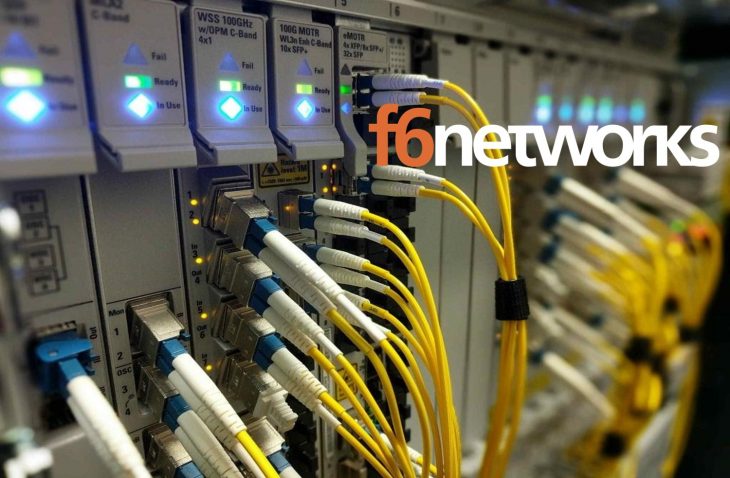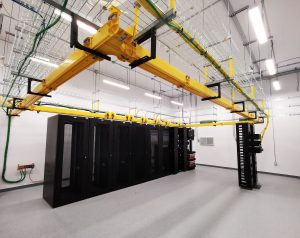
Company has national ambitions, too
By Ruby Pratka
WHEN FREDERICTON-BASED f6 Networks began building its fibre optic network in New Brunswick in 2008, the tech sector was reeling from a crushing recession, and fibre networks were nowhere near as ubiquitous as they now are.
More than a decade later, f6 Networks has built the largest independent fibre optic network in the Maritimes and is using its wide-ranging dark-fibre network to allow clients to build internal networks their own way. Today, the f6 network is the largest privately owned open-access fibre network in Canada.
K-Line Construction, the predecessor to f6, was founded in 1981 and has its roots in telephone line construction. It later expanded into Internet access. “I come from a company that has done construction and telecom and [in 2008] we had just sold an Internet service provider,” said f6 Networks CEO and co-founder Tom Rivington (right) in an interview. “We wanted to get into fibre optics, and there was demand from local telecom networks.”
As the recession hit, many of the companies which initially showed interest in f6’s infrastructure pulled back, but government and university contracts allowed the company’s fibre optic business to take flight. Its first major contract was with the University of New Brunswick Research Centres and the New Brunswick Community College system, Rivington recalls. The company later partnered with the federally funded nonprofit pan-Canadian CANARIE network to expand fibre optic availability to northern New Brunswick and parts of Nova Scotia.
“Those were the big deals that helped us build the framework for our company over the first five to six years,” Rivington recalled. Using those networks as a springboard, the company began specializing in dark fibre – laying fibre optic cable without guarantee of a client, and then “lighting” it at a client’s request.
“We went from building physical cable and selling strands to building a transmission platform across those strands to serve customers,” – Tom Rivington, f6 Networks
“With dark fibre, the growth of the network scales with the growth of the company,” says Rivington. “It’s an expensive endeavour and it’s very capital-intensive, especially in a region like ours with a market that’s small and distances that are large. You have to invest in your own infrastructure, at your own pace.” He says the company is “fortunate” to have secured partnerships with CANARIE as well as major private companies, which have made it easier for f6 to expand its networks, particularly in more remote areas. (This paragraph has been adjusted since it was first posted to repair an inaccurate quote.)
“We went from building physical cable and selling strands to building a transmission platform across those strands to serve customers,” he explained. Those customers can include local mobile service providers, content providers and government entities. Using f6’s transmission capabilities gives its clients access to increased flexibility in network development, Rivington said. “When a customer acquires dark fibre from a provider such as ourselves, it gives that customer the same flexibility as if they built that fibre themselves; they can decide on the technology, the optical supplier, the bandwidth and a roadmap to growing their requirements that they control in terms of equipment and cost.”
Currently, f6 Networks provides dark fibre and wholesale fibre optic Internet access to hundreds of clients across the Maritimes. Their current network covers large swaths of New Brunswick and Nova Scotia and connects with third-party providers in Quebec and the northern United States, as well as with Ontario and points further afield via peering centres. “The vast majority of our business is dark fibre; we also sell to large enterprise and wholesale carriers looking to have access to the New Brunswick and Nova Scotia markets,” said Rivington. “They are two distinct segments, in that dark fibre is leasing the physical [fibre optic cable], and wholesale is leasing the access to the network.”
“No one is going to stop needing the Internet.” – Rivington
During the Covid-19 pandemic, demand for f6 Networks’ services has increased along with the general demand for bandwidth. “The [small- and medium-size enterprise] side of our business came to a screeching halt, but our large-enterprise business, government business and dark fibre business did not slow down,” added Rivington.
“Demand actually increased, because we sell capacity to large-scale customers, and their users started consuming bandwidth from home via their servers, so they needed more bandwidth. People working from home needed to be able to dial into their offices. No one is ever going to stop needing the Internet.”
Rivington’s current goal is to contribute to the expansion of North America’s dark fibre networks through connections with other independent regional providers across Canada

Inside the f6 Fredericton POP.
. “We’re probably the largest independent fibre network in Canada, we interconnect with the U.S. and we have two of the largest content providers in the world as our customers,” he said (he’s not at liberty to name his customers). “We’ve been talking to other small independent dark fibre networks and the goal is to attach them to each other. Part of our long-term vision is to create an open-access fibre network across the country that isn’t controlled by a major company.”
He believes an open-access network controlled by multiple regional players could help solve two of the thornier problems for Canadian ISPs – the storage of data on American servers, which has implications for data privacy, security and liability, and the lack of high-speed connectivity in rural areas – as well as boosting competitiveness for smaller ISPs.
“Most Internet traffic in Canada transits through the U.S. now, and building a new cross-Canada fibre network would allow us to keep more traffic in Canada, which has advantages for privacy and performance,” said Rivington. He believes this would also require building high-capacity fibre networks through rural regions, getting connectivity to smaller ISPs and supporting the expansion of broadband connectivity across the country.
The company that got its start connecting Maritime communities through telephone lines has a nationwide vision, according to Rivington. “We want to become Canada’s go-to provider of direct fibre connectivity.”
Are you an independent network operator or know of one Cartt.ca should highlight? If so, please contact us at editorial@cartt.ca.



